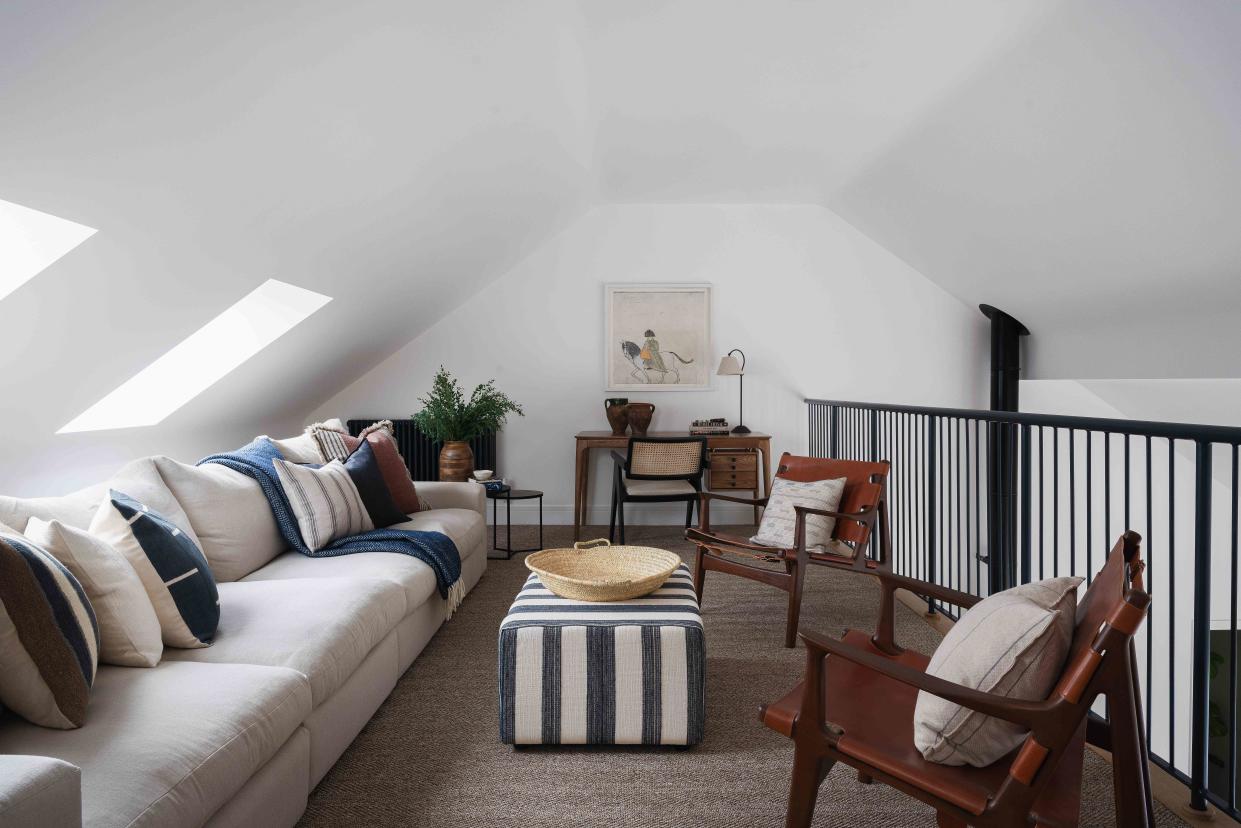Fake Natural Lighting in Any Dark Room With These 5 Simple Ways

Dim light can set a mood for a low-key night in or when you and your family are ready for a good night’s sleep. It isn’t as great when your space is constantly lacking the right amount of natural light during the day.
Although you may not be able to reorient your home completely to allow the light to filter in regularly, you can make some changes to mimic or make up for low lighting. We asked home decor experts to share their ideas and experience on letting the light shine in the (relative) darkness.
Tina Delia is an interior designer and founder of Delia Designs. She also teaches lighting techniques for interior designers at Moore College of Art & Design in Philadelphia.
John Barnes is a design expert at Lamps Plus.
Make Way for the Light
It might seem obvious, but before you start trying to replicate natural light, be sure that your space is set up to capture the light that already streams in. This means setting up a furniture layout with heavy items placed away from any windows. It also means using window coverings that allow for flexibility throughout the day.
“To balance natural light and lofty drafts, use a light-colored sheer as your base layer. Sheers will filter in sunlight on a cloudy day, livening up an entire room,” says Tina Delia, founder of Delia Designs. “Pair with a heavier curtain, in a neutral color, to provide an uplifting warmth. Hang curtain rods as high as possible to make your ceilings look taller, which in turn will make your space feel more open and bright.”
Pick a Perfect Palette
The next thing to look at when seeking better light is your walls. A dark color scheme in a room that gets little natural light is only going to make the space feel more closed-off and even smaller than it actually is. Stick with light, bright colors, which will amplify the light that the room does get.
“Painting your room a bright white is a great place to start but you can also play with the light by adding something reflective near a window or even a lamp,” says Delia. “This will give the illusion of more light and help keep your energy levels up even as the sun goes down earlier in the day.”
If you have darker floor coverings and replacing them isn’t in the budget or allowed by a landlord, consider adding a large rug to help the room feel lighter as well.
Use Reflective Decor
As part of your overall design for your home, consider not only the paint color but also what you put on the walls themselves. Items with glossy paint, metal finishes, or other reflective surfaces make the best use of the light. “Placing mirrors strategically around the room can reflect natural light or room lighting and make the room feel brighter and more natural,” says John Barnes, a design expert at Lamps Plus.
Choose the Right Light Bulb
Did you know that bulbs come in not only different types but also something called color temperatures? Incandescent bulbs lean toward the warmer end of the Kelvin scale, which is used to measure color temperatures. LED lights are able to handle higher color temperatures and move into the cool end of the scale, which is more like the outdoors.
Depending on the kind of bulb you choose, you can pick one around 5,000K to mimic a natural ambiance.
Vary Lighting Sources
Depending on the weather or time of day, you will likely have different lighting needs for different tasks or moods. How you stage the lighting in a room can really affect how well you can replicate sunlight in the space. Just sticking a lamp on the end tables won’t brighten the space as well as you might hope.
When a room feels dark, a multi-pronged approach is best, especially if you need to move light sources from one area to another. “Try using a mix of lighting designs that will together create a layered look that you can adjust as needed,” says Barnes. “Ceiling lighting, wall lights, lamps, and accent lighting should all work together.”
Even better, look for lighting options that pull double duty, especially if you are limited in the number of electrical outlets in a room. “Table or floor lamps with side reading lights are a great choice, as they offer both general room lighting and then also act as task lighting,” says Barnes.
Just as it is important how you place furniture in your space, the position of your lighting sources is key. The goal is to use the best materials, types of lamps, and overhead fixtures to mimic natural light, so make sure to place that lighting where it will best illuminate as much of the room as possible.
“If you use sources that mimic the way natural light is cast, such as overhead lights, floor lamps, and table lamps, the result will be more comfortable and appealing,” explains Barnes. “Avoid placing light sources so that they create harsh shadows or glare.”
You don’t have to knock any holes in the wall or open up the ceiling to let in nature’s light. With a few well-thought-out design choices and creative furniture placement, you'll be able to mimic the look of the outdoors that will brighten up any day.

